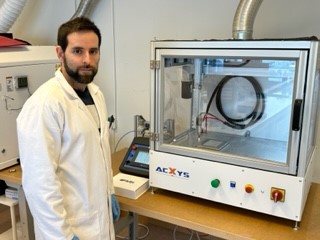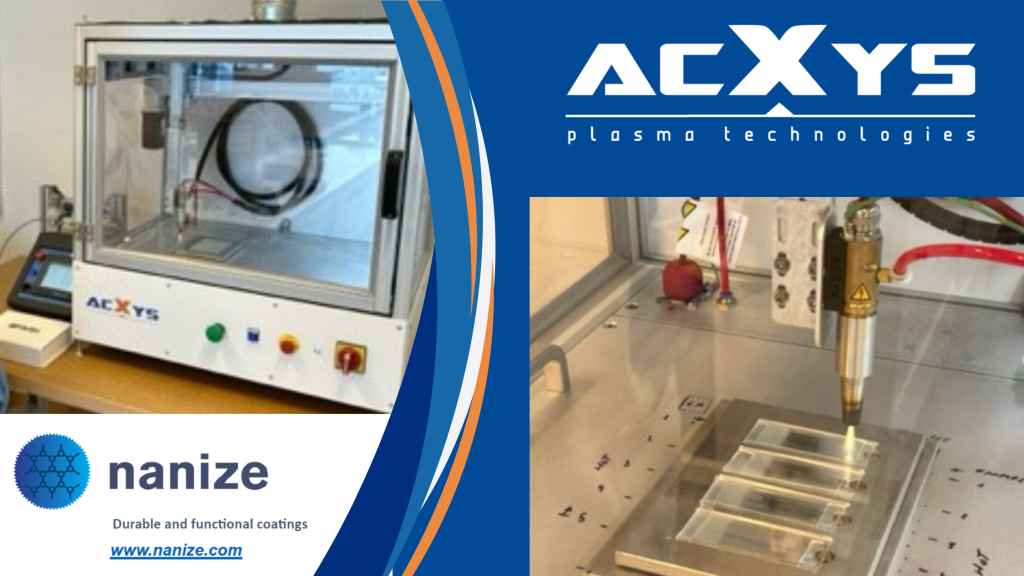Polyfluoroalkyl chemicals (PFAS’s) are a diverse group of approximately 12 000 compounds valued for their indestructible and non-stick properties but that can have a negative effect on public health and the environment. The European parliament is currently proposing to ban the use of over 10 000 PFAS’s.
Based in Norway, Nanize, who are among the leaders in the drive to replace PFAS’s, research and develop innovative, additives, high-performance formulations, nano-particles, surface pre-parations and functionalised coatings. With a vision to revolutionize the coating industry, Nanize have recently purchase a LabScan unit supplied by AcXys. This user-friendly, “plug and play”, table-top equipment combining state-of-the-art ULS atmospheric plasma technology and all-inclusive 3 axis robot allows the precise control of activation critical parameters.
LabScan has been integrated into the unique process developed by Nanize for the creation of their durable functional coatings, for which a comprehensive method and apparatus patent has been filed.

NANIZE R&D expert
Mr David Hogg, CEO, Nanize commented :“When you are producing coatings that are more slippery than Teflon, getting them to stick to a surface can be a challenge. At Nanize we overcome this problem with plasma activation with our LabScan system, supplied by AcXys Technologies who have proven to be a most reliable partner”.
The Atmospheric Plasma Solution
The principle of plasma technology is to pass a gas, such as compressed air across an electric arc. The gas then becomes a plasma which is blown directly onto the material to be treated. The energy contained in the plasma causes a chemical reaction which, firstly, eradicates any surface organic residues then, at a molecular level, grafts new properties into it or even removes material, depending on the application or process. These new grafted properties are mostly polarised, inducing an increase in surface energy and therefore adhesion. This technology is integrated with a 3 axes robot as one single unit called Labscan.
LabScan equipment
Built around a closed cell, LabScan equipment integrates a Cartesian robot and ULS technology. Easy to handle tabletop equipment, it can interpolate linear trajectories with a scanning envelope of 220mm x 300mm x 200mm for standard equipment.
Perfectly secure, its use does not present any industrial risk. It has a unique remote touch screen interface for both Cartesian robot programming and ULS technology or can be controlled via a PC for enhanced axes control. The Cartesian robot formed by the combination of 3 linear axes is mounted in the upper part of the cell to optimize space and accessibility, making it easier to position the parts to be treated and to clean the activation zone.

